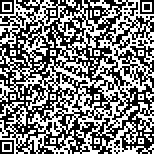下载中心
优秀审稿专家
优秀论文
相关链接
摘要

秸秆是农田生态系统的重要组成部分。秸秆覆盖度(CRC)的遥感估算可以大范围、快速地获取地面秸秆覆盖信息,对保护性耕作的推广具有十分重要的意义。基于Sentinel-1 SAR影像和Sentinel-2光学影像分别构建了雷达指数与光学遥感指数,结合吉林省梨树县春秋两期实地采样数据,探究遥感指数与玉米秸秆覆盖度的相关性。为进一步提升玉米秸秆覆盖度的估算精度,结合雷达指数与光学遥感指数,采用最优子集回归的方法建立玉米秸秆覆盖度的估算模型,完成研究区的玉米秸秆覆盖度估算制图。结果表明:土壤质地分区建模可有效解决土壤异质性问题,提升反演精度。各遥感指数在秋季高覆盖时期的表现均优于春季低覆盖时期。STI和NDTI指数在光学遥感指数中表现最好,R2分别为0.701和0.697,而在雷达指数中,基于余弦矫正法的
Crop residue is the remaining stems, leaves, and fruit pods in the field after crop harvest. Crop residue plays an important role in the farmland ecosystem. Remote sensing technology has advantages in time and space, and it has become the main method to estimate Crop Residue Cover (CRC). Using remote sensing technology to estimate CRC can obtain information about ground CRC quickly in a large scale, which is of great significance to the promotion of conservation tillage. On the basis of a Sentinel-1 SAR image and a Sentinel-2 optical image, radar index and optical remote sensing index were constructed, respectively. The autumn and spring field sample data in 2018 and 2019 in Lishu County, Jilin Province were combined. The correlation of the remote sensing index and the maize residue cover was explored, and the method of soil texture zoning modeling was adopted to reduce the influence of surface background factors on the estimation of CRC. To further improve the estimation accuracy of maize residue cover, the radar index and optical remote sensing index were combined. Moreover, the optimal subset regression and soil texture zoning were used to establish the maize residue cover estimation model, and the estimation mapping of maize residue cover in the study area was then completed. Results show that: soil texture zoning modeling can effectively solve the problem of soil heterogeneity, thus improving the accuracy of inversion. The performance of each remote sensing index in autumn high coverage period in 2018 is better than that in spring low coverage period in 2019. The STI and NDTI index have strong stability and the best performance in optical remote sensing index. R2 is 0.701 and 0.697, respectively; whereas in the radar index, the correlation between

